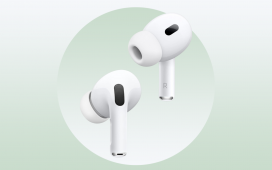A new generation of elevator technology is beginning to make its way into office and apartment buildings, bringing with it digital and AI-based enhancements — and taking a chunk of your personal data to do so.
Faster, safer, more “entertaining” — next gen elevator tech has potential for developers willing to spend the money. And the most advanced change — horizontal movement — will literally change the direction of the field.
“The evolutionary changes are now happening at a faster and faster clip,” John Sarcona told Axios. Sarcona is the senior manager of new installations at Schindler, one of the “big four” elevator companies, along with Otis, TK Elevator, and Kone.
A new generation of elevator technology is beginning to make its way into office and apartment buildings, bringing with it digital and AI-based enhancements.
Making elevators safer: The addition of infrared sensors and AI can make rides safer, the industry says.
Spurred by the COVID-19 pandemic, rider interest in touchless elevator technology has pushed companies like TK Elevator to rapidly create new products based on previous expertise. One possible solution, according to Australian installation firm Simplex Elevators, uses infrared sensors to allow passengers to choose their floor while staying 1-3 cm away from the buttons.
Elevator calling apps, like Otis’ eCall and Schindler’s ElevateMe, can let you select your floor from your phone, and facial recognition could help your office elevator “recognize” you and take you to your typical destination.
In addition to hygienic safety, the new generation of elevator technology also addresses that other big elevator fear.
Digitized elevators “can virtually talk to us, tell us when they need help, and in combination with AI and machine learning even advise technicians on the cause and solution,” Jon Clarine, Head of Digital Services at TK Elevator North America, said in a blog post.
“So, we can fix elevators before customers even realize there’s an issue.”
The elevator pitch to building owners is the transformation of a simple lift from tedious necessity to an entertaining, personalized, and potentially monetized immersive experience.
Personally uplifting: Part of the companies’, ahem, elevator pitch to building owners is the transformation of a simple lift from tedious necessity to an entertaining, personalized, and potentially monetized immersive experience.
“Now the lights in the cabin can become blue because we know it’s your favorite color. Your favorite music can come on,” Clarine told Axios.
The entire experience could be optimized for the rider.
“If you’re a very important person, we can invoke a VIP service which would drop everybody off on the ride, come to your floor, pick only you up and not pick anyone else up along the way, and take you directly to your office or suite,” Clarine offered as an example.
Of course, as Otis chief digital office Neal Green told Axios, that would require a compromise on data and privacy, already a point of contention for tech like facial recognition.
As the next gen elevator technology proliferates, how that data is gathered, used, and owned will need to be sorted out.
The most advanced elevator tech may change the industry’s direction, literally — horizontal movement.
The future: As robots become a more common part of daily life — and we begin to cut the ribbon on more “robot friendly” buildings — a new type of rider will need to be taken into account.
Otis has developed the Otis Integrated Dispatch Application Programming Interface (API), allowing robots “to communicate with Otis elevators – and ultimately enter, ride and exit elevators without human intervention,” senior VP of global engineering Ricardo Muñoz wrote.
Elevators themselves may soon be taking a completely different direction, as new tech like TK’s MULTI, a rope-free system that can move cars both vertically and horizontally.
“That vertical and horizontal movement opens up a lot of possibilities for overall urban transportation,” Clarine told Axios, especially as elevators are developed and incorporated into ever-glitzier, ever-growing, and ever-more idiosyncratically shaped buildings.
Each car could also become a sensor suite, helping gather data on things like humidity or noise to optimize those buildings, Green told Axios — and perhaps help property managers make better, more lucrative pitches.
We’d love to hear from you! If you have a comment about this article or if you have a tip for a future Freethink story, please email us at [email protected]










